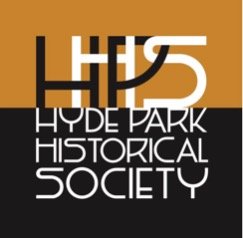(George) Washington Park
5531 S. King Dr. Chicago, IL 60615
Washington (George) Park stretches from 51st to 60th streets (north to south) and Cottage Grove Avenue to Martin Luther King Jr. Drive (east to west). It is a historic South Side park, designed by Calvert Vaux and Frederick Law Olmsted, two of the most prominent architects of the United States. This park houses the DuSable Museum of African American History, Dyett High School, an 1871 Fire Relic, a Washington Monument, a Refectory, and a large sculpture designed by Lorado Taft “Fountain of Time.” The park also offers spaces for recreation, including gyms, nature areas (Harvest Garden and Arboretum), playgrounds for various sports, afterschool programs, and even a game room.
Local History/Background for Teachers’ Prep:
Timeline:
In 1869, the Illinois State Department passed three bills to create park and boulevard systems in Chicago, based on Paul Cornell and Frederick Law Olmstead’s advocacy for park and boulevard systems in Chicago. In 1871, Olmstead and his partner Calvert Vaux completed the grand plans for Washington Park. The original plans were burned in the 1871 Fire. The plans, nonetheless, were implemented and the park was constructed in the 1880s by another landscape architect, Horace William Shaler Cleveland (also known as H.W.S. Cleveland). Before 1881, Washington Park was known as the “Western Division” connected to the “Eastern Division” (Jackson Park), through the Midway Plaisance. In 1881, the names of both parks were officially changed to honor the first and seventh presidents of the United States, respectively. In 1910, Daniel H. Burnham’s firm built a building on the park property. Since 1971, this building has housed the DuSable Museum of African American History. In 1922, Lorado Z. Taft, a sculptor and writer, created the Fountain of Time sculpture on Cottage Grove Avenue and 59th Street. He was inspired by the “Paradox of Time” poem by Henry Austin Dobson. During the 1930s, the Park District added two swimming pools to meet a growing need in the African American community, which in the 1990s were converted into a major aquatic center. The Walter H. Dyett High School for the Arts was built on property transferred from the park to the Board of Education in 1991. In 2004, the National Register of Historic Places added Washington Park to its list. In 2016, the park was saved by the city losing out on the Olympic bid and as the location to house the Obama Presidential Center (Jackson Park won the Obama Center).
Who Designed It?
Washington Park is a culmination of many great architects and landscape designers of the 20th century. Frederick Law Olmsted (1822-1903), a landscape architect and journalist among his other titles, was the Chief Architect of Central Park in New York and was the Head of Landscape for the World’s Columbian Exposition. He’s responsible for the combination of art and nature in both Washington and Jackson Park. He worked on many of these projects with his partner, Calvert Vaux (1824-1895). Vaux was a British landscape architect and once the Secretary of the U.S. Sanitary Commission. This duo was behind the Central Park in New York, the New York State Reservation at Niagara Falls, and many more public and private landscapes. It was the Olmsted and Vaux plan for Washington Park that was implemented by Horace William Shaler Cleveland (1814-1900), another prominent landscape architect of the nation. Cleveland was inspired by Ralph Waldo Emerson’s simple design style and Henry Wadsworth Longfellow’s idea of social responsibility. The Roundhouse in the park, which is now used by the DuSable Museum, was built by Daniel H. Burnham (1846-1912), a highly influential architect known for his work in the World’s Columbian Exposition of 1893 and his contribution to the development of skyscrapers.
A Public Activism Space
Washington Park is not just a recreational space, but it has also been used since its beginning years for activist gatherings. Two prominent groups—Bug Club aka Washington Park Forum and Negro Bug Club aka Negro Forum—used the park as a meeting space. The Bug Club started meeting in the year of the Pullman Strike in 1894. It consisted of white radicals and Marxists, while the Negro Bug Club consisted of evangelical preachers and Communists, among others. The Bug Club’s meeting spot is now specified in the park—named The Forum—with a flag pole and seats serving as their official meeting spot.
Videos (Pre-Field Trip Prep):
Virtual Field Trip - DuSable Black History Museum and Education Center
https://www.dusablemuseum.org/aiovg_videos/freedom_and_resistance/
Questions for Discussion:
Why do we name places after people? If you could name a park after someone, who would it be?
How can these public spaces be utilized best?
Suggested Activities:
A visit to the DuSable Black History Museum and Education Center
Entrance is free for Illinois K-12 public school students. The museum has exhibitions about Harold Washington, The 1919 Race Riot, and Dr. Margaret T. Burroughs’ art and influence. Book your tickets here:
Walking Tour Script:
Entrance to the park
Washington Monument and Grand Boulevard
Driveway in Washington Park
Washington Park Refectory
Entrance to South Park/1871 Fire Relic
Washington Park Conservatory (does not exist anymore)
The DuSable Museum of African American History (1921); previously the administration building
Farmstead Bridge
Boat shelter
Further Resources:
Britannica: Frederick Law Olmsted
https://www.britannica.com/biography/Calvert-Vaux
Hudson River Valley: Calvert Vaux: Architect and Planner by William Alex


